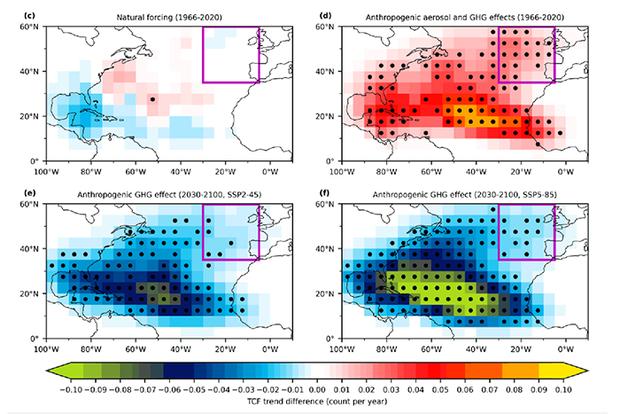Anthropogenic effects on tropical cyclones near Western Europe

An ensemble of trends from the new study. Credit: doi:10.1038/s41612-024-00721-2

An ensemble of trends from the new study. Credit: doi:10.1038/s41612-024-00721-2
Tropical Cyclones (TC) hitting Western Europe are not as rare as one might think. Approximately 10% of Atlantic TCs have made landfall in Europe in the past four decades, about one European landfall per year. Understanding and projecting TC frequency change is especially challenging in certain coastal regions with lower TC activity yet high exposure, and a relatively short duration of reliable observed records – such as Western Europe.
Using large-ensemble experiments with GFDL’s SPEAR model system, the authors show that the observed increase in TC frequency near Western Europe from 1966 to 2020 is likely linked to the anthropogenic aerosol effect. Under a future scenario featuring regionally controlled aerosol emissions and substantially increased greenhouse gas concentrations (Shared Socioeconomic Pathway 5-85), SPEAR simulations show a potential decrease in TC frequency near Western Europe by the end of the 21st century.
These contrasting changes between the past and future highlight the different effects of aerosols and greenhouse gases on TC frequency near Europe. Disparate results for historical and future TC frequencies are primarily due to the rise for 1966-2020 and potentially subsequent fall for 2030-2100 in TC genesis frequency in the North Atlantic. The response of large-scale environmental conditions to anthropogenic forcing is found to be crucial in explaining the historical and future changes in TC frequency near Western Europe.